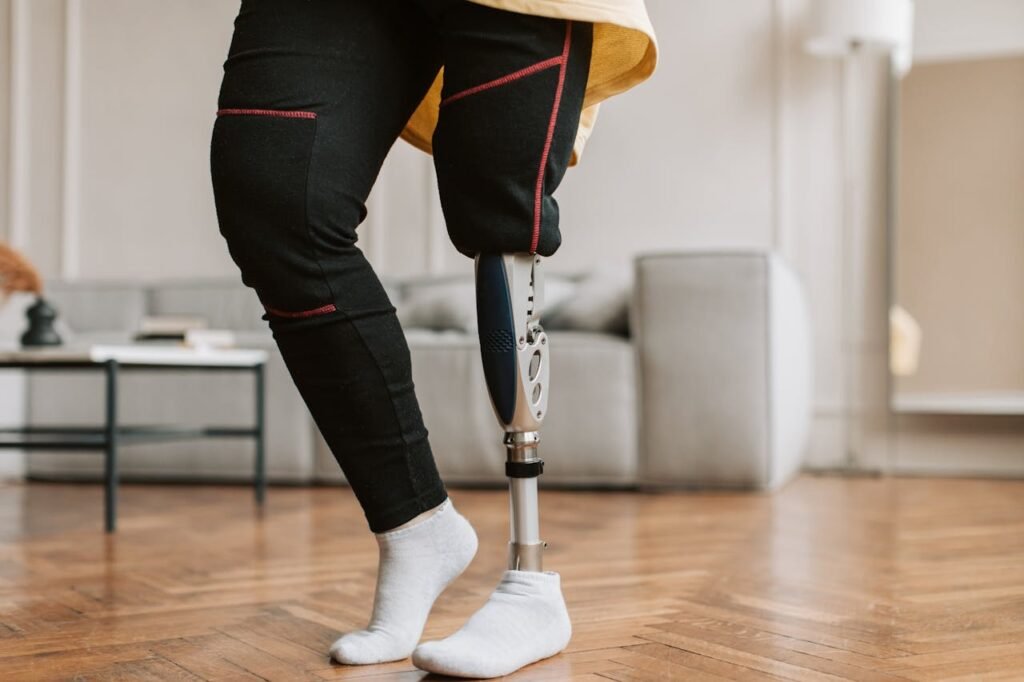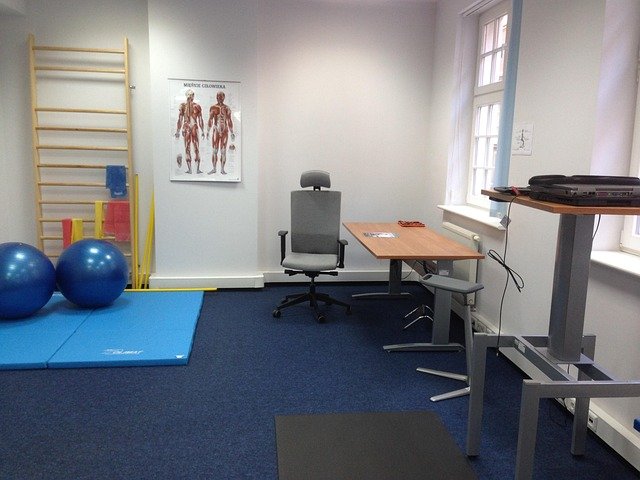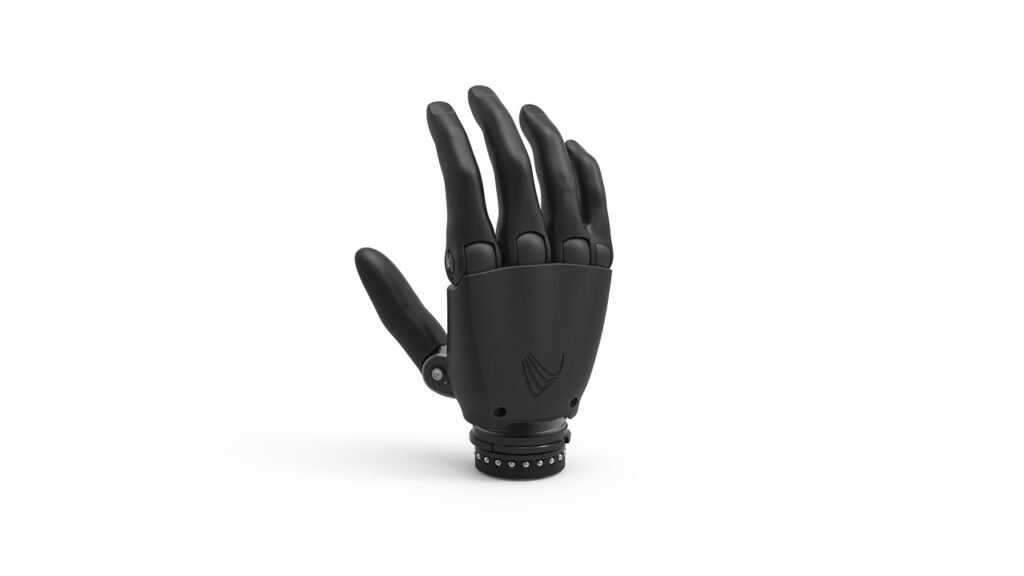Everyday life can feel like a balancing act for seniors using prosthetics. Simple tasks like dressing, cooking, or walking across the room can take extra energy, both physical and emotional. But living fully doesn’t have to mean feeling exhausted.
With a few smart habits and small changes, it’s possible to do more while feeling less tired. Energy conservation isn’t about doing less—it’s about doing things differently. It’s about using your strength wisely, planning with intention, and moving in ways that protect your body and peace of mind.
In this guide, we’ll explore practical, heart-centered ways for seniors using prosthetics to conserve energy without sacrificing independence. You’ll learn how to plan your day, move efficiently, and create an environment that supports your energy—not drains it. The goal is simple: more living, less fatigue.
Understanding Energy Conservation
What Energy Conservation Really Means

Energy conservation is the art of balancing activity with rest so your body stays strong throughout the day. It’s about knowing when to move and when to pause, how to simplify tasks, and how to listen to your body’s signals before exhaustion sets in.
For prosthetic users, this concept takes on special meaning. Walking with a prosthesis, maintaining balance, or even adjusting posture can use more energy than it does for others. That’s why conserving energy isn’t laziness—it’s wisdom. It helps you stay active longer without pushing your limits.
When you master this balance, your body feels lighter, your days feel smoother, and your confidence grows. Every small step becomes more meaningful because it’s taken with purpose, not pressure.
Why Seniors with Prosthetics Tire More Easily
Aging naturally changes how the body uses energy. Muscles weaken, joints stiffen, and the heart may not pump as efficiently as before. When using a prosthesis, these changes can be felt even more.
Every movement—like lifting the leg, maintaining balance, or controlling grip—requires a bit of extra effort. The prosthetic limb itself adds slight weight, and learning to move with it demands focus and coordination. Over time, this combination can cause early fatigue, even during routine activities.
However, tiredness doesn’t mean you’re doing something wrong. It’s a signal to pause, plan, and protect your energy for what truly matters.
The Benefits of Energy Conservation
When you learn to manage your energy wisely, life opens up in beautiful ways. You feel more capable, confident, and in control of your routine. Here’s how it helps:
- You can do more without needing long recovery breaks.
- You feel less frustrated because tasks become smoother and safer.
- You gain confidence knowing you can pace yourself throughout the day.
- Your mood improves as your energy stays balanced.
Energy conservation helps you live with intention. It turns daily life from a struggle into a steady rhythm—gentle, confident, and full of grace.
Knowing Your Energy Limits
Listening to Your Body
Your body speaks to you constantly—it tells you when it’s fresh, when it’s slowing down, and when it needs rest. The challenge is learning to listen closely before you reach exhaustion.
Notice how your body feels during each activity. Are your shoulders tightening? Is your breathing faster than usual? Are you losing balance? These are quiet signs that it’s time to slow down.
It’s far better to rest early than to stop suddenly because of fatigue. Resting before exhaustion helps your body recover faster and prevents strain on your muscles and prosthetic socket.
Understanding Energy Levels Throughout the Day
Most seniors find they have more energy in the morning and less in the late afternoon or evening. This natural rhythm can guide how you plan your day.
Try to schedule important or physically demanding tasks when your energy is highest. Leave lighter activities—like reading or phone calls—for later. This simple rearrangement can help you feel productive without feeling drained.
Also, take note of how different foods, medications, or emotional states affect your energy. Some meals or medications may cause drowsiness, while excitement or stress may temporarily boost energy. Awareness helps you make better choices.
The Energy Bank Analogy
Think of your energy as money in a bank. Each activity—walking, cleaning, talking, even thinking—withdraws a little from your energy account. Rest, good sleep, and nutrition are what refill it.
The goal is not to spend everything early in the day. Instead, you manage your “energy balance” carefully, saving some for later activities and unexpected needs.
This mindset prevents burnout and helps you enjoy your day without running out of strength halfway through.
Planning Your Day Smartly
Setting Priorities
Start each morning by asking, “What really matters today?” Focus your energy on essential tasks and let go of what can wait. You don’t have to do everything at once—some things can be done tomorrow or shared with others.
Write down your top three priorities for the day. Keep them realistic and kind to yourself. Completing even one meaningful task is a success.
This clarity prevents you from scattering your energy across too many small, tiring activities.
Spacing Out Activities
Spacing out your activities helps your body recover between efforts. If you have multiple tasks, spread them throughout the day instead of doing them all back-to-back.
For example, if you plan to cook and do laundry, take a 20-minute rest between the two. Sit comfortably, elevate your residual limb, and breathe deeply. Short, regular breaks restore stamina and prevent fatigue from building up.
Remember, taking breaks isn’t losing time—it’s gaining strength.
Preparing Ahead
Energy conservation often begins with preparation. Setting things in place before you need them saves movement later.
For instance, keep frequently used items at waist height so you don’t have to bend or stretch. Arrange your kitchen so utensils and ingredients are within easy reach. Choose clothing that’s simple to put on and remove.
These little adjustments remove unnecessary steps and protect your energy for moments that truly matter.
Using Tools and Technology
Assistive devices and prosthetic technology exist to make life easier, not harder. Don’t hesitate to use them.
Lightweight reachers, walkers, or supportive chairs can help you complete tasks with less strain. If your prosthetic limb uses myoelectric or mechanical features, learn to use them efficiently—small improvements in technique can save significant effort.
At Robobionics, we design our prosthetics with this philosophy in mind. Each hand, finger, and limb we build aims to reduce fatigue by working naturally with your body’s rhythm. The more intuitively your prosthesis responds, the more energy you save each day.
Moving Efficiently with a Prosthesis
The Importance of Posture
Good posture is the foundation of efficient movement. When your body is aligned properly, your muscles work less to maintain balance. Poor posture, on the other hand, forces your back and hips to overcompensate, which drains energy quickly.
Whether you’re sitting, standing, or walking, try to keep your shoulders relaxed and your head upright. Distribute your weight evenly across both sides of your body.
If you’re unsure about your posture, ask your physiotherapist or prosthetist for a simple assessment. Even small corrections can dramatically reduce daily fatigue.
Practicing Smooth, Controlled Movements
Rushing often leads to clumsy or forceful movements that waste energy. Instead, practice smooth, deliberate motions. Move at a pace that allows your muscles and prosthesis to work in harmony.
When walking, avoid taking long strides or locking your joints. Keep your movements fluid and rhythmical. Over time, this reduces pressure on your prosthetic limb and improves your overall endurance.
For upper-limb prosthesis users, use both hands whenever possible, even if one is weaker. Sharing the workload between sides prevents overuse fatigue.
Balancing Activity and Rest
It’s natural to want to keep going once you start something, but energy conservation thrives on balance. Try following a simple pattern: activity, rest, and then activity again.
After finishing one task, take a few minutes to stretch or rest before starting another. This rhythm keeps your muscles fresh and your energy steady.
You’ll soon find that you can do more across the day because you’ve learned the art of pacing instead of pushing.
Adapting Your Home for Less Effort
Organizing for Efficiency

A well-organized home saves both time and energy. Arrange your space so the things you use most are always easy to reach. Keep heavy or less-used items lower to avoid strain.
For example, store cooking pots on lower shelves, but keep plates and cups closer to chest height. Place chairs near areas where you often stand, such as the kitchen or dressing area, so you can sit down to rest whenever needed.
The goal is to make movement smooth and natural—every step should serve a purpose.
Simplifying Movement Around the House
Even small obstacles can cost precious energy. Keep walkways clear of clutter, rugs, or cables. Good lighting also helps you move safely without hesitating or shuffling.
If possible, arrange your living space so essential rooms are close together. Avoid frequent trips up and down stairs. You can keep duplicate items, like glasses or chargers, in different rooms to reduce unnecessary walking.
These simple changes add up—they keep your steps purposeful, not tiring.
Using Supportive Furniture
The right furniture can make movement easier. Choose chairs with firm cushions and armrests to help you sit and stand without strain. Use stable surfaces to steady yourself when needed.
For seniors who use leg prosthetics, avoid very low seating that makes getting up difficult. A supportive mattress also helps you sleep better, so your energy is replenished for the next day.
Comfort at home equals conservation in motion.
Managing Emotional Energy
How Emotions Affect Physical Energy
Fatigue doesn’t come only from movement. It can also come from emotions. Worry, frustration, or sadness can drain your strength faster than any physical task. Many seniors who use prosthetics describe days when they feel tired even before doing anything. That’s often emotional exhaustion, not physical.
Understanding this connection is key. Your mind and body share the same energy source. When your mind is calm, your body feels lighter. But when stress builds up, it slows everything down. Recognizing when you’re emotionally tired allows you to rest in ways that truly restore you.
Letting Go of Frustration
Some days, the prosthesis may feel heavy or stubborn. You might struggle with a buckle or need to sit down more often than you’d like. It’s easy to become irritated or discouraged. But frustration burns energy too—it’s like pressing the gas pedal while the brakes are on.
Instead of fighting those moments, try pausing. Take a deep breath, remind yourself that slow progress is still progress, and adjust your pace. Over time, this calm approach helps you save both mental and physical strength.
When something doesn’t go as planned, talk to someone about it. Sometimes a short conversation with a family member, friend, or prosthetist can lighten the emotional load you carry alone.
Keeping a Positive Focus
A positive attitude doesn’t mean ignoring challenges. It means choosing to notice what’s still possible instead of what’s difficult. When you focus on what’s working—the prosthesis fitting better, walking a little farther, or lifting an object more easily—your body responds with more energy.
Studies show that positive emotions like gratitude and joy help regulate blood pressure and breathing. They relax your muscles and lower fatigue. Each morning, take a moment to name one thing you’re grateful for. It could be as small as enjoying a warm cup of tea or hearing a friendly voice. These quiet thoughts build emotional strength that fuels you all day.
Nutrition and Hydration for Better Energy
Eating for Sustained Energy

Your body is like a machine—it needs good fuel to run smoothly. For seniors, and especially those using prosthetics, nutrition plays a major role in how energetic you feel. Eating right helps muscles recover faster, keeps blood sugar stable, and reduces that mid-day tiredness.
Try to include foods that release energy slowly, such as whole grains, fruits, and lentils. Avoid heavy fried meals or sugary snacks before activity, as they give a quick burst of energy that fades just as quickly. A balanced meal with protein, fiber, and healthy fats keeps your stamina steady.
For example, a breakfast of oats with fruit, a light lunch of vegetables and rice, and an early dinner of soup or khichdi can help maintain smooth energy levels.
Staying Hydrated
Even mild dehydration can make you feel sluggish or dizzy. Seniors often drink less water because of a reduced sense of thirst, but your body still needs it. Aim for small sips throughout the day rather than large glasses all at once.
If plain water feels boring, you can add a squeeze of lemon, cucumber slices, or mint leaves. Herbal teas and coconut water are also refreshing choices. Avoid too much caffeine, especially in the afternoon, because it can affect both energy and sleep.
Hydration helps your heart and muscles work efficiently, making every movement with your prosthesis smoother and easier.
The Role of Timing
When you eat matters as much as what you eat. Large meals right before activity can make you feel heavy. Instead, eat smaller portions more often—this keeps energy steady and prevents fatigue.
If you’re planning an active morning, have a small, nutritious snack 30 minutes before you begin, like a banana or handful of nuts. After activity, eat something with protein to help muscles recover. This rhythm supports energy conservation from inside out.
Advanced Pacing Strategies
The Art of Timing Your Energy
Once you understand your body’s natural rhythm, you can plan your day like a professional athlete—pacing yourself for efficiency and endurance. Mornings are usually best for focused or physical tasks because your energy is highest after rest. Reserve late afternoons for lighter chores, reading, or hobbies.
You can even think in terms of “energy waves.” Start at your peak, let yourself rest midway, and rise again gently before winding down in the evening. Following this rhythm prevents burnout and keeps your mood balanced.
Micro-Resting Techniques
Micro-rests are short, frequent pauses that allow recovery without stopping your day completely. For example, after standing for 15 minutes, sit for two. If you’re cooking, lean against the counter while chopping vegetables. When folding clothes, do it sitting down instead of standing.
These little breaks might seem minor, but they add up to huge energy savings. Your body remains active but never overloaded. Micro-resting teaches you to move smarter, not harder.
The Power of Planning Ahead
Plan activities so that everything you need is nearby before you start. For example, when bathing, gather your towel, clothes, and prosthesis liner within arm’s reach. When cooking, keep utensils and spices ready before turning on the stove.
This eliminates the need for extra trips or movements. Each saved step conserves energy you can use elsewhere. Over time, planning becomes second nature—you’ll find yourself finishing tasks faster and feeling less tired.
Recovery and Recharging
Resting Without Guilt
Many seniors feel guilty about resting, as if it means they’re giving up. In truth, rest is part of productivity. Just like charging a phone, your body needs downtime to function at its best.
Instead of thinking, “I’m tired already,” try saying, “I’m recharging.” This simple shift changes how rest feels in your mind. It becomes a positive, purposeful action.
Create a comfortable resting corner at home—maybe near a window or your favorite chair. Let it be a place where you can relax, stretch your limbs, and take slow breaths. Ten quiet minutes here can revive you more than an hour of pushing through fatigue.
Stretching and Gentle Movement
Rest doesn’t always mean stillness. Gentle movement between tasks helps release stiffness and boost circulation. Stretch your arms overhead, roll your shoulders, or flex your ankles slowly. These small motions prevent your body from feeling heavy and help blood reach every part of your muscles.
If you use a leg prosthesis, try seated stretches that keep your joints flexible. For upper-limb users, gentle wrist and shoulder circles relieve tension from prosthesis use. Stretching takes very little time but gives your body the message that it’s being cared for.
Sleep as Energy Restoration
Nighttime rest is your body’s main way of refilling its energy tank. Seniors who use prosthetics sometimes struggle with sleep due to discomfort or anxiety. Creating a bedtime routine—cleaning your limb, moisturizing your skin, and winding down quietly—helps signal the body that it’s time to rest.
A well-rested body moves more efficiently and tires less during the day. Protect your sleep as carefully as you protect your prosthesis. They’re both vital tools for independence.
Maintaining Motivation and Consistency
Turning Energy Conservation into Habit
New habits take time, but once they become routine, they feel natural. Start small—plan your mornings, pace your chores, and include one or two breaks. In a few weeks, you’ll notice how your energy lasts longer through the day.
It’s not about doing everything perfectly. It’s about noticing what makes you feel good and repeating it. The more consistent you are, the more automatic your energy-saving behaviors become.
Tracking Progress
Some seniors find it helpful to keep a simple energy journal. Write down what activities feel tiring and what feels easy. Over time, you’ll see patterns—certain times of day or tasks that drain you more than others.
Once you know your triggers, you can plan better. You might shift certain chores to mornings or ask for help with heavier ones. Knowledge gives you power, and power brings peace.
Celebrating Small Wins
Every day you manage your energy well is a victory. Maybe you walked an extra block without needing a break. Maybe you cooked lunch and still had energy for a chat with your grandchildren. Celebrate these small wins—they’re proof of progress.
Recognizing achievements keeps motivation high. It reminds you that conservation doesn’t mean slowing down—it means moving forward intelligently.
Emotional Well-being and Social Connection
The Energy of Companionship

Being around people who uplift you can renew your energy faster than any rest. Laughter, conversation, and shared moments stimulate the mind and ease emotional fatigue.
Spend time with family, join a senior group, or connect with others who use prosthetics. Sharing your journey helps lighten the emotional load and creates encouragement that lasts.
Avoiding Emotional Drains
Just as some relationships lift you up, others may quietly drain you. If certain situations or people leave you feeling exhausted, it’s okay to step back and protect your peace. Emotional boundaries are also a form of energy conservation.
Surround yourself with those who understand your pace, respect your needs, and celebrate your victories.
Reconnecting with Joy
Energy thrives in joy. Find activities that make you happy and include them regularly. It could be gardening, music, painting, or even short walks outdoors. Joy brings vitality back into your body—it reminds you why conserving energy matters.
When life feels meaningful, effort feels lighter.
Conclusion: Living Fully, Moving Wisely
Energy conservation is not about slowing life down—it’s about sustaining it. For seniors using prosthetics, it’s the bridge between effort and ease, between motion and rest. By understanding your energy, planning your day, and moving efficiently, you create space to enjoy what truly matters.
At RoboBionics, we believe technology should support your natural rhythm. Every prosthetic we design—whether the advanced Grippy™ Bionic Hand or our lightweight mechanical models—is built to move in harmony with your body, helping you save effort and stay independent.
The goal isn’t just to walk or grip; it’s to live comfortably, confidently, and without fear of fatigue. With a little awareness, good rest, and the right prosthesis, you can do more, tire less, and live each day with renewed strength.
If you or a loved one are ready to experience prosthetics designed for comfort and endurance, you can schedule a free demo or consultation at https://www.robobionics.in/bookdemo/.
You have more energy inside you than you think. With care, balance, and a few small changes, every day can be lived with vitality—and every step, a step toward freedom.



